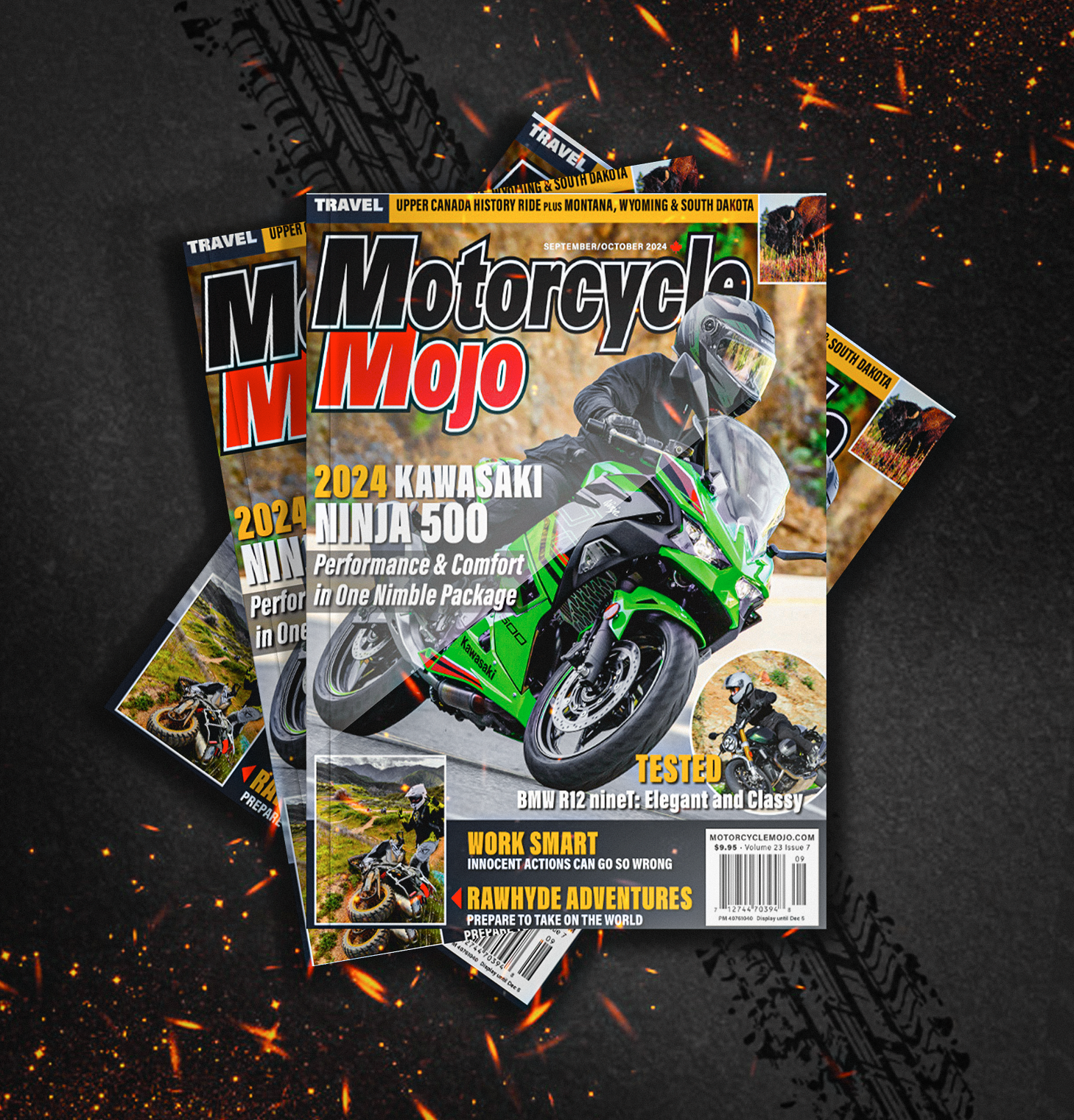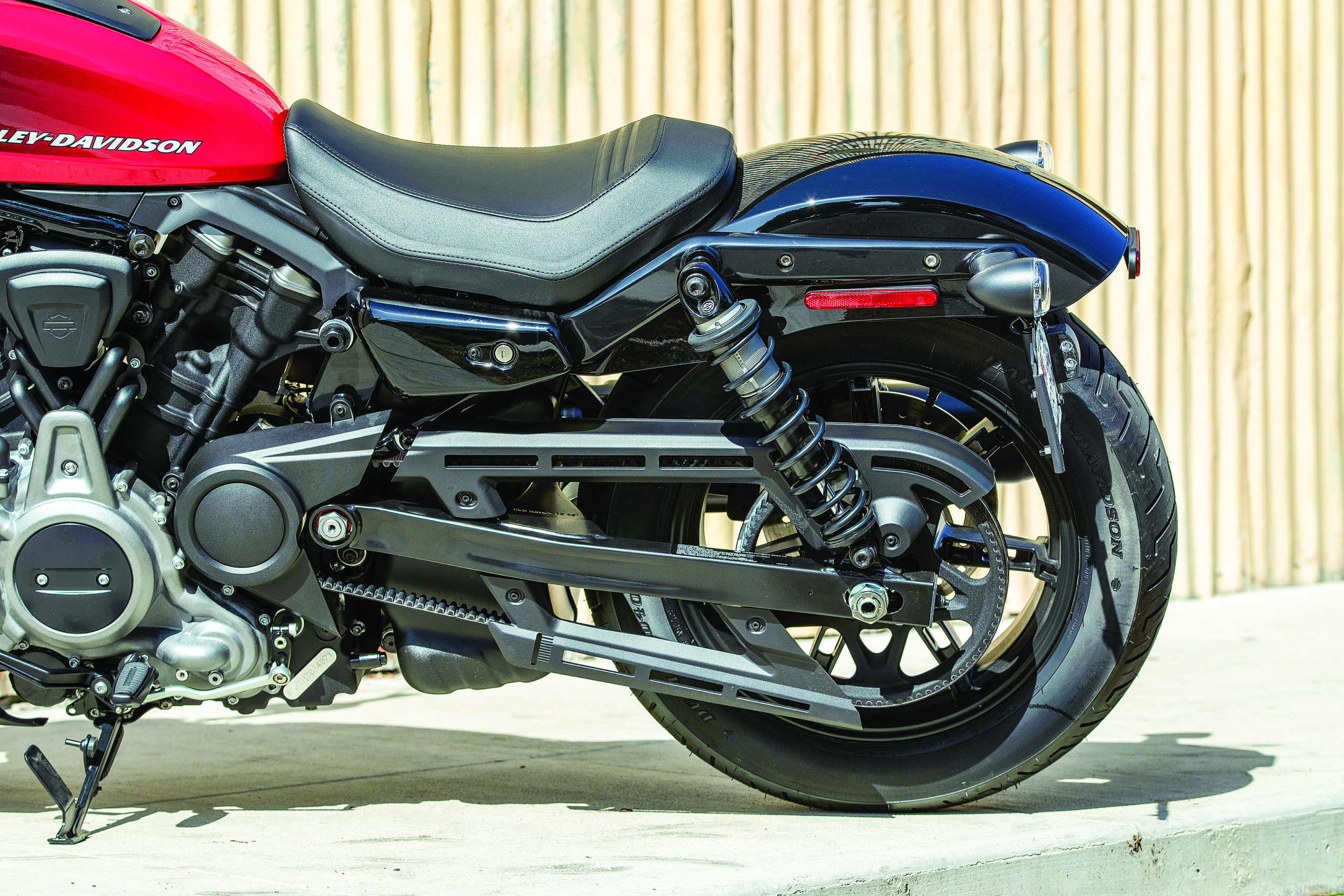Drive Systems
Pros and cons of the three motorcycle final drive systems.
Reader Lawrence Dunning recently asked to compare the different drive systems used on motorcycles: shaft, belt, and chain. Here’s a look at the benefits and drawbacks of each.
Shaft Drive
A shaft drive system comprises a drive shaft and a drive unit: one end of the shaft connects to the transmission output, while the other end has a pinion gear, which meshes at 90 degrees with a ring gear within the drive unit. An oil bath lubricates the ring and pinion gears and the bearings. This system has several benefits.
The hypoid ring and pinion gears (cut with a spiral shape, not straight cut) combine with the sound-damping effect of oil to make the system quiet. Since the oil bath is sealed, the system is clean. It is also mostly maintenance-free, and never needs adjustment or external lubrication — if there are no leaks, all it requires is an infrequent oil change.
Because the system is sealed, it can handle a variety of conditions, including sand, water crossings, mud and gravel — but note that, to prevent pressure-
related oil leaks, the system is vented to the atmosphere, and any extended water crossings risk contaminating the oil. Also, the drive shaft will have one or more universal joints, which require occasional inspection for wear. Barring a failure, shaft drive should last the life of the bike.
A shaft-drive system does, however, have some disadvantages. Shaft-drive swingarms are usually bigger to enclose the drive shaft, and the internal components are made of steel, and they are big. This adds unsprung weight to the rear, and any weight added before the suspension adds harshness to the ride.
Also, the system adds complexity, since the direction of travel of the transmission output shaft has to be turned 90 degrees through additional gears — otherwise the drive shaft would stick perpendicularly out the side of the bike. Also, shaft drive has a tendency to lift the rear end when accelerating and squat the rear when decelerating. This is because the pinion gear tries to ride up the ring gear when torque is applied to it, thus causing the drive shaft to act like a lever.
Early shaft-drive designs reduced this effect through swingarm geometry; a longer swingarm reduced this effect, though this also lengthened the wheelbase, which affected handling. Modern designs use an additional pivot-and-link system to counter this action, though this adds even more weight and complexity. Finally, shaft drive is expensive to manufacture compared to other drives, so you’ll see it mostly on bigger, pricier bikes, and a failed shaft drive system can be very expensive to repair.
Belt Drive
 A belt-drive system utilizes a reinforced, toothed belt and a pair of pulleys to drive the rear wheel. You’ll note that belt pulleys are larger in diameter than chain sprockets; this is because a reinforced belt cannot be bent around a small radius. It’s the oldest of the drive systems; early motorcycles used leather belts.
A belt-drive system utilizes a reinforced, toothed belt and a pair of pulleys to drive the rear wheel. You’ll note that belt pulleys are larger in diameter than chain sprockets; this is because a reinforced belt cannot be bent around a small radius. It’s the oldest of the drive systems; early motorcycles used leather belts.
A belt has several advantages: It is clean (no lube needed), and quiet, and it requires infrequent adjustment, usually only when the rear wheel is removed. It is lighter and costs less to manufacture than a shaft drive. Kept clean and free of any oil contamination (via an oil leak), it can last for tens of thousands of kilometres.
There is, however, one big downside: Belt drives do not like gravel, dirt, sand or mud. A belt has a wide contact surface on the pulley it drives, and any contaminating material that gets caught between belt and pulleys will either tighten the belt so much it can potentially damage the transmission output bearing, or the belt can outright snap. I have seen this happen a few times after a rock poked through a belt.
If you do have a belt-driven motorcycle, you will notice it has many protective plastic and rubber pieces along its path, especially between the belt and tire: make sure these remain in place and intact. Although it costs less to manufacture than a shaft drive, a belt is more prone to damage-related failure, and if it does break, your ride is over — it cannot be repaired on the road. A drive belt alone costs about $300.
Chain Drive
Finally, the most common drive system: chain drive. It is lightweight (especially when using an aluminum rear sprocket), it is inexpensive, and it is capable of handling all riding conditions, which is why it is the sole system used on dirt bikes. The downsides: It requires constant lubrication and adjustment (the chain stretches with time). Lube also has a tendency to fly off and dirty the bike.
It’s also noisy, especially when dry or worn out. It has the shortest lifespan, with a well-kept chain lasting 20,000-25,000 km. Replacement cost is low, however, with aftermarket sprockets and a good-quality chain totalling as low as about $100.
Thank you for reading, Lawrence, and thanks for the query.

Thanks for Reading
If you don’t already subscribe to Motorcycle Mojo we ask that you seriously think about it. We are Canada’s last mainstream motorcycle magazine that continuously provides a print and digital issue on a regular basis.
We offer exclusive content created by riders, for riders.
Our editorial staff consists of experienced industry veterans that produce trusted and respected coverage for readers from every walk of life.
Motorcycle Mojo Magazine is an award winning publication that provides premium content guaranteed to be of interest to every motorcycle enthusiast. Whether you prefer cruisers or adventure-touring, vintage or the latest models; riding round the world or just to work, Motorcycle Mojo covers every aspect of the motorcycle experience. Each issue of Motorcycle Mojo contains tests of new models, feature travel stories, compelling human interest articles, technical exposés, product reviews, as well as unique perspectives by regular columnists on safety or just everyday situations that may be stressful at the time but turn into fabulous campfire stories.
Thanks for considering a subscription. The Mojo team truly appreciates it.









